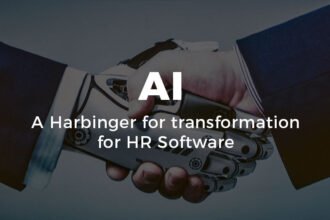 There’s a new job board in town and it’s using data science to better connect people looking for jobs with the right jobs.
There’s a new job board in town and it’s using data science to better connect people looking for jobs with the right jobs.
 There’s a new job board in town and it’s using data science to better connect people looking for jobs with the right jobs.
There’s a new job board in town and it’s using data science to better connect people looking for jobs with the right jobs.
Bright.com offers a data-driven approach to job searching that combines machine learning, data science, and the largest resume study in history to create the Bright Score, a tool the company says is the recruiting equivalent of the “world’s first rocket: fast, sleek, and a shock to an industry that’s been mired in antiquated technology.”
Using data analytics, Bright takes the “search” out of job searching by matching potential employees with employers.
To make that happen, Bright’s data science team – neuroscientists, mathematicians and nuclear physicists – worked for about two years crunching the data from the profiles of six million job seekers, 2.8 million resumes and 13,400 job descriptions. The result: the Bright Score, a machine-learning algorithm that analyzes thousands of data points including education, employment history, employer prestige, career progression and social connections and then gives each job seeker a score for each open job.
The Bright Score looks at hundreds of features on a resume in an instant, enabling Bright’s data science team to analyze and score a complete view of a candidate in the time it would take a human evaluator to understand just a couple of words. That means Bright’s data scientists can do a comprehensive analysis of all the pertinent data and immediately identify which candidates best fit which of the two million open job listings on Bright.com.
The algorithm then provides a numerical assessment from 0 to 100 of how qualified a candidate is for a particular job. Subsequently, the company gives each job seeker a list of the positions that best fit his skills. It would take a recruiter an hour per resume to do the same thing. The system also helps recruiters zero in on the most qualified candidates within seconds, cutting the time it typically takes them to find the top prospects by as much as 90%.
Pretty cool.
But what happens once the candidate shows up for an interview? Although the information you have about the candidate’s skills, education, and experience indicate he’s what you’re looking for, how can you really be sure he’s the best “fit” for the position?
The bottom line is that you have to be prepared with the right interview questions to ensure a successful hire. But you can’t just rely on applicant screening software that delivers the same interview questions for every candidate. Nor can you rely on your gut feeling when it comes to making an important hiring decision. Rather, since analytics has taken you to this point, take it a step farther and turn to analytics-driven hiring technology to ensure you hire the right person for the job.
Mike Kennedy (@talentanalytics) says, “When analytics are used throughout the entire employee lifecycle, it can lead to a happier, more loyal and productive workforce.”
Next Steps:
- Subscribe to our blog to stay up to date on the latest insights and trends in data analytics.
- Check out our complimentary “5-Minute Guide to Business Analytics” to find out how user-driven “analytic” or “data discovery” technologies help business and technology users more quickly uncover insights and speed action.
- Take a look at our complimentary “5-Minute Guide to HR Analytics” to learn how analytics can transform the perception of HR as a cost center to a strategic ally for business leaders.
Linda Rosencrance
Spotfire Blogger






